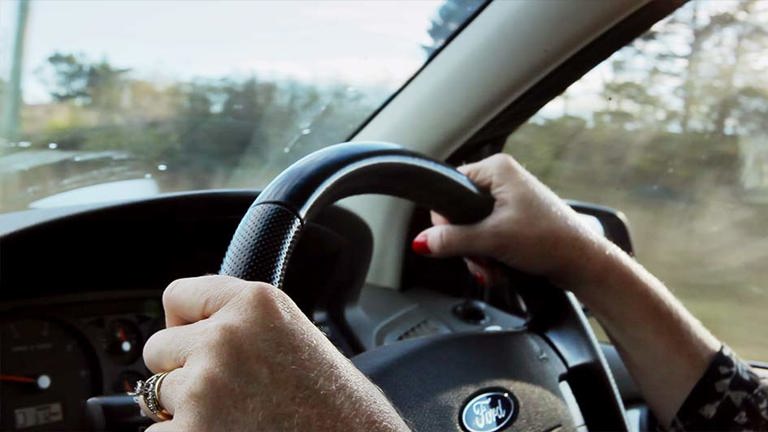We tend to think of self-driving cars as a thing of the future, but it turns out that the future could actually be just around the corner if not already unfolding right before our eyes. Keen to find out more about how self-driving cars work and the role of AI? Read on for a snapshot of what the future of cars might look like.
How do self-driving cars work?
A self-driving car is literally just that - a car that can drive itself. Self-driving cars function by sensing what’s going on around them so they can drive without the need of human intervention.
Autonomous vehicles, automated cars, self-driving vehicles, it’s possible you’ve heard a few of these terms floating around already. Although they’re often used interchangeably, there are actually distinct differences between these three types of vehicles.
The term autonomous suggests capabilities beyond straight up electromechanical functions. A fully autonomous vehicle would be self-aware and have the capacity to make its own decisions. As an example, you might plug in the route to the office, but the car could decide to take you for an interstate road trip instead… Not ideal when you’re already late for work. Alternatively, an automated vehicle would follow orders and then drive itself without your assistance.
A self-driving car is slightly different again. While self-driving cars have the ability to drive themselves, they need a human passenger that can intervene if necessary. From the levels of driving automation listed below, self-driving cars tend to fall under the level three or level four categories and are subject to geofencing. A fully autonomous level five car can travel anywhere without the need for a human passenger to be present and is not bound by geofencing.
So, what are these levels of automation? The Society of Automotive Engineers (SAE) has defined six levels of driving automation that currently range from zero (fully manual) through to five (fully automated):
- No automation: human performs all driving tasks.
- Driver assistance: vehicle features a single automated task like maintaining speed with cruise control.
- Partial automation: also known as advanced driver-assistance systems - the vehicle can steer and accelerate but the human monitors all tasks and can intervene at any time.
- Conditional automation: the vehicle has environmental detection capabilities and can perform most driving tasks but human override is still required.
- High automation: the vehicle can perform all driving tasks under certain circumstances with geofencing in place but human override is still available.
- Full automation: the vehicle can perform all driving tasks under any circumstance and no human interaction is required.
How do self-driving vehicles use AI?
Artificial Intelligence (AI) is essential to the inner workings of self-driving cars. Self-driving cars rely on different systems from sensors and cameras to complex algorithms and machine learning systems to help them function and stay on track. AI is what helps self-driving cars to process data from these various systems to improve fuel efficiency and ensure safety.
There’s a lot of technology and science behind how self-driving vehicles operate. In a nutshell, self-driving cars process all the different data and information captured by the numerous systems to identify objects and classify them, which helps the car to develop an understanding of its surrounding environment. It's this process that allows the car to drive on the road, abide by traffic conditions and avoid any potential obstacles it might come across.
How safe are self-driving cars?
Self-driving cars are still in the early stages of development and testing which makes it difficult to say exactly how safe they are. Bigger players in the self-driving car game are hoping that these vehicles will help to make the roads safer by limiting or removing altogether the potential for human error that is often the cause of on-road accidents. Until the technology improves and the safety testing evolves we can’t say for certain, but in the meantime here are some of the benefits and challenges that self-driving car manufacturers have listed.
The benefits of self-driving vehicles
Self-driving car producers have mentioned a range of benefits that they hope their futuristic vehicles will bring once they hit the road.
Self-driving cars have the potential to make life easier, especially for people who might not be comfortable or able to get behind the wheel of a regular vehicle, like the elderly or physically disabled. Getting from A to B without a hitch is something that many people take for granted but access to self-driving cars could be a game changer for those who struggle to get around.
Self-driving cars are essentially driven by a computer that’s programmed to abide by traffic laws and road rules. This means that these vehicles won’t be tempted to speed, can’t get distracted by mobile phones or decide to get behind the wheel after a big night while still being under the influence.
Some experts believe that self-driving cars could go some way to reducing accidents on the road by minimising the potential for human error which is often the main cause of car crashes. A reduction in crashes can also lead to greater traffic efficiency by helping to relieve traffic jams with the decrease in constant braking and accelerating, helping to reduce CO2 emissions.
The challenges of self-driving cars
Although self-driving cars have the potential to revolutionise the future of transportation with a raft of exciting benefits, there’s no denying that these vehicles aren’t currently without a number of drawbacks.
There is still uncertainty about how self-driving cars will perform in different weather conditions, particularly if they rely on cameras and sensors to map out their surroundings. How will these systems cope if there is heavy rain, snow or ice that obstruct lane markings or other signs that the sensors rely on?
If a self-driving car was to be involved in an accident, who would be liable? Would it be up to the human passenger or manufacturer to take responsibility? It’s still far too early in the piece to say who would assume liability.
How would AI handle the subtle cues and non-verbal communication that humans instinctively recognise and rely on to make split second decisions? Will self-driving cars be able to replicate human recognition?
Although self-driving cars might be able to send signals to one another as a way of communicating on the road, how will they navigate roads that will be shared with fully manual cars that are still operated by humans?
The future of driverless vehicles in Australia
While you might have spotted a few Teslas cruising the streets near you, self-driving cars are still a few years off hitting the roads in Australia.
Many vehicles on Australian roads feature some degree of automation, usually level one or two thanks to driver assistance features like parking assist, cruise control and lane keeping. However, cars with more advanced automation levels are still being trialled domestically and abroad and won’t be available to the public any time soon.
Each day is another step closer to self-driving cars hitting the road but for now they’re still a thing of the not too distant future. It’s still too early in the game to be looking for a set of self-driving wheels, let alone insurance for self-driving cars, but in the meantime you can check out Youi’s range of car insurance offerings to keep your current ride covered.



